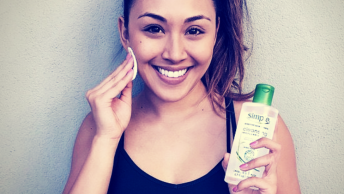Influencers are storytellers for the digital age. They have built followings with their ability to tell stories that resonate with their audiences. Brands can leverage influencers’ expertise to achieve business goals by forming mutually beneficial partnerships. Here are 7 easy steps for a successful influencer program.
Step 1: Make the case for an influencer program
Influencers can help to share your brand message online to a wider, yet targeted, audience. They have built their followings through their storytelling capabilities and their ability to inspire other social users. By partnering with influencers, brands can connect with their potential customer base in a more organic way.
For many companies,influencer marketing has become a bonafide inbound marketing channel. In fact, the vast majority (84%) of marketing professionals are expected to launch at least one brand ambassador campaign in the next 12 months.
Why are so many brands investing in influencer programs? If done correctly, these social users can help to increase brand trust, engagement, retention, and sales.
- 92% of consumers trust online content created by their peers above all other forms of advertising. Nielsen.
- Brands make $6.50 for each $1 spent on influencer marketing. Tomoson.
- Customers acquired via social influencer efforts have a 37% higher retention rate than customers acquired through other channels. McKinsey
Step 2: Identify the goals of your influencer program
The first step to a successful influencer program is to outline how the program will help you to meet your overarching business goals. Don’t let your brand advocate program operate in a silo; it needs to move the needle on larger brand goals!
SEE ALSO: Should Influencers Play a Role in Shaping Your Brand
Typically, successful influencer programs aim to build collaborative relationships with relevant social users and facilitate the co-creation and promotion of brand content. But these are not the only reasons why marketers leverage influencers.
Some of the most popular high-level goals for working with an influencer include:
- Content promotion
- Product launch
- Content creation
- Event management
- Corporate communications
- SEO
- Crisis management
Step 3: Define your influencers
The number one challenge that marketers cite when rolling out influencer marketing strategy is identifying the right influencers for their brand.
Influence = Audience Reach (# of followers) x Brand Affinity (expertise and credibility) x Strength of Relationship with Followers
In order to find your brand’s most impactful influencers, you will need to take into account the following.
- Audience: Your brand advocate must have a large and engaged audience
- Relevance: Your brand advocate’s audience must be relevant to your customers
- Authenticity: Your brand advocate must appear to be authentic
- Activity: Your brand advocate must be active on social media and post frequently
- Voice: Your brand advocate’s tone and style must match those of your brand
Watch out for…
Fake followers: If your brand advocate has thousands of followers but only a few likes and comments on each photo, they probably aren’t a real influencer. Another way to assess this is by looking at sudden spikes in follower counts and strange comments that may have been written by bots.
And finally, don’t confuse size with influence. The key to a successful program is to uncover and align with people who have the trust and respect of their audiences–not just those with the most followers.
SEE ALSO: Bloggers vs Snapchat Influencers: Which is Better for Your Brand?
Step 4: Find your influencers
So, how do you find these influencers? Start by identifying who is already posting about your brand online.
Conduct a Hashtag Search
Search your brand hashtag on social networks to see who is already posting about your brand. You can also look up relevant keywords into social media search bars to find influencers who post about your industry.
Use a Free Social Media Tool
There are many free tools that can help you to identify advocates across social media. For example, Pixlee’s free Instagram Analytics Reports allows you to track your brand hashtag across Instagram, identify influencers, and monitor the conversation about your brand.
Ask for Recommendations
Influencers know other influencers. Once you find a brand advocate that resonates with your target audience, ask him or her to recommend others with followings similar to him or herself. Some social media networks will even give you recommendations of their own.
Step 5: Connect with your influencers
Now that you’ve identified a list of potential influencers, you will need to develop these partnerships. To ensure a strong start to these relationships, here are three tips.
1. Reach Out Directly
Brands often rely on the agencies that they work with to drive communication with influencers. However, 79% of influencers would rather that brands reach out to them directly. While it’s tempting to use a generic template for your outreach, it’s best to personalize each pitch.
2. Get to Know Them
Take the time to get know your influencers so that you can better understand their following and what they are looking for out of a partnership. Part of the outreach process is proving to the influencer that your opportunity is relevant to their audience.
3. Don’t Lose Track
If you do not have an influencer platform, create a spreadsheet to help you record their information. Use a consistent method to keep track of their contact information and to avoid any mistakes. The majority of the time, you will be able to find your brand ambassador’s contact information on their profile.
Step 6: Reward and incentivize your influencers
Marketers falsely assume that all influencers want to be incentivized with money. However, when it comes to their true motivations, several factors actually outweigh cash rewards.
There are many different ways to incentivize people– and influencers are no different. If you have a small budget, this is your chance to get creative and to figure out what other perks that you can offer will motivate your brand advocates.
While traditional incentives are monetary payment or branded products, brands can cultivate their relationships through unique experiences and perks. For example, Tissot, the official timekeeper of Tour de France, sponsored influencers to attend the event and share their experience on social media.
Step 7: Measure the results of your influencer program
Once your brand influencer program is up and running, you’ll want to assess if it has helped you to meet your business goals.
SEE ALSO: How to Measure Your Digital Branding Efforts
Think back to the goals you defined in Step 2. Have you made progress on these metrics? What business insights have you learned?
What strategies have you used to form successful influencer partnerships? Let me know in the comments.








